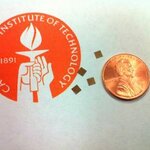Technology

Predicting weather events is more mysticism than science and it's only after the fact that predictions are recalibrated to try and hone in on more accuracy. Hurricane Sandy in the eastern United States was predicted to be a super-storm but by the time it hit New York City was a regular old tropical storm, though one that became a welcome $17 billion federal stimulus plan and a call for action on global warming that did not cause it.
Rainfall and number of tropical storms during the summer monsoon season is also inaccurate, though its impact on the agriculture, economy, and people in…

Safe, Tasty, Nutritious Almonds We Shouldn't Take For Granted
Sometimes we need to hear about things that are working well in our food system. I'd like to describe a case where sound regulation and well-applied technology combine to protect us from a significant risk posed by a natural chemical called Aflatoxin - one of the most toxic and carcinogenic chemicals known.
Aflatoxin can contaminate a wide range of foods from maize (field corn), to peanuts, to cotton seed meal, to tree nuts (almond, walnut, pecan, pistachio), to wild collected nuts (Brazil nut), to dried…

The rumor mill has it that Elsevier is in advanced talks to buy Science 2.0 fave Mendeley, a platform academics use to collate PDFS and share research and collaborate via a social network (and a terrific company all the way around, in my opinion).
TechCrunch says that the sale might close by the end of February and could be in the region of $100 million. But they also say Mendeley has closed a recent round of funding for ~$10 million. The company has only publicly disclosed raising $2 million.
That raising-more-money-and-selling-the-company part makes less sense. Early investors don't…

The HIrisPlex DNA analysis system
that can establish hair and eye color from forensic samples in modern crime scenes can also identify details from ancient human remains, according to a paper which used the system to reconstruct hair and eye color from teeth up to 800 years old.
The system looks at 24 DNA polymorphisms, naturally occurring variations, which can be used to predict eye and hair color from human remains such as teeth and bones.
Dr. Wojciech Branicki, from the Institute of Forensic Research and Jagielonian University, Kraków, explained, "This system can be used to solve…

Aaron H. Swartz was one of the most outspoken and hands-on activists for the transparency movement, which I largely support. He was especially active with open access issues and copyright reform. He was part of the team that built an early version of Reddit and the widely-used RSS protocol, which he worked on at age 14, and there is more to his name inspite of his young age. But he committed suicide in New York last Friday.
Now, like so many creative and far above average intelligent people, he killed himself; he was only 26.
Although we find much rationality in all…

In the post-genomic era, 'omic' technology, and marketing claims to match, promise to understand the biology of various diseases. Metabolomics seeks to look at the chemical fingerprints that cellular processes leave behind and does so through characterization of the small molecule metabolites.
Researchers have been using biological fluids to measure the health of people since the 1940s but it was done before that in both Europe and Asia. Doctors in the middle ages sometimes kept, urine 'charts' which linked urine issues to medical conditions. Chromatography made it more scientific in the…

The Tree of Life is what Charles Darwin first sketched in 1837 to show how species evolved by natural selection. The diagram started at a central point with a common ancestor, then the lines spread apart as organisms evolved and separated into distinct species. The letters represented species.
Both he and scientists that followed understood that the original drawing was not literal, given that multiple species mix and interbreed in ways he didn't consider possible - he didn't know everything and wasn't trying to show it all in his notebook. In this century, we have seen a tree of life…

Researchers at Imperial College have released a video game that was written in part by what they call an Artificial Intelligence (AI) "machine" named Angelina, which is a clever acronym for "A Novel Game-Evolving Labrat I've Named Angelina".
Their latest effort, released last month, is called "A Puzzling Present" (download it here). Players have to help Santa collect gifts on 30 Christmas levels with holly and other things getting in the way.
Easy enough, a million apps do puzzle games. But Angelina the AI created the game, using a system of modules that get parameters for the game…

Can social networks determine which students need the most help and which ones excel and might be guided to further study or careers in that subject area? Information Systems graduates say they can do it.
They analyzed data from a Ben-Gurion University course that included assignments submitted online and Web site logs (containing 10,759 entries) to construct social networks of explicit and implicit cooperation among the students. The implicit connections are used to model all the social interactions that happened "offline" among the students: e-mails with questions, conversations in…

Want a microchip that operates 300 times the speed of chips today? Maybe some day.
Tiny, inexpensive silicon microchips developed by a pair of electrical engineers at the California Institute of Technology (Caltech) generate and radiate high-frequency electromagnetic waves, called terahertz (THz) waves, that fall into a largely untapped region of the electromagnetic spectrum—between microwaves and far-infrared radiation—and that can penetrate a host of materials without the ionizing damage of X-rays.
When incorporated into handheld devices, the new microchips could enable a broad range of…